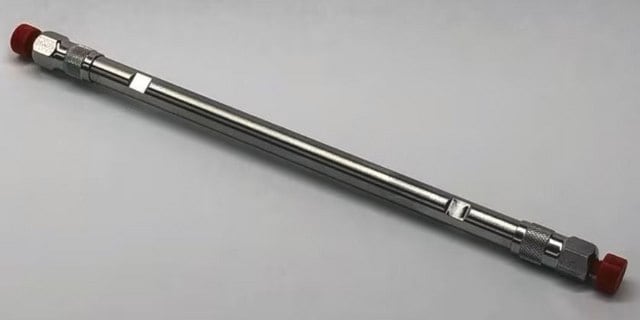53307-U
Ascentis® Express Peptide 160 Å ES-C18 (2.7 μm) HPLC Columns
L × I.D. 15 cm × 2.1 mm, HPLC Column
Synonym(s):
Peptide Separation ES-C18 Column
About This Item
Recommended Products
product name
Ascentis® Express Peptide ES-C18, 2.7 μm HPLC Column, 2.7 μm particle size, L × I.D. 15 cm × 2.1 mm
material
stainless steel column
Agency
suitable for USP L1
product line
Ascentis®
feature
endcapped: no
manufacturer/tradename
Ascentis®
packaging
1 ea of
parameter
≤100 °C temp. range
600 bar max. pressure (9000 psi)
technique(s)
HPLC: suitable
LC/MS: suitable
UHPLC-MS: suitable
UHPLC: suitable
L × I.D.
15 cm × 2.1 mm
surface area
90 m2/g
impurities
<5 ppm metals
matrix
Fused-Core particle platform
superficially porous particle
matrix active group
C18 (octadecyl) phase
particle size
2.7 μm
pore size
160 Å
operating pH range
1-9
separation technique
reversed phase
Looking for similar products? Visit Product Comparison Guide
Related Categories
General description
Legal Information
Application
guard cartridge
related product
required but not provided
Storage Class Code
11 - Combustible Solids
WGK
WGK 3
Flash Point(F)
Not applicable
Flash Point(C)
Not applicable
Choose from one of the most recent versions:
Certificates of Analysis (COA)
Don't see the Right Version?
If you require a particular version, you can look up a specific certificate by the Lot or Batch number.
Already Own This Product?
Find documentation for the products that you have recently purchased in the Document Library.
Chromatograms
application for HPLCapplication for HPLCapplication for HPLCapplication for HPLCOur team of scientists has experience in all areas of research including Life Science, Material Science, Chemical Synthesis, Chromatography, Analytical and many others.
Contact Technical Service







